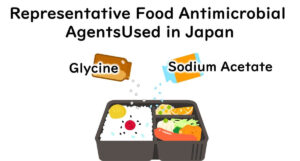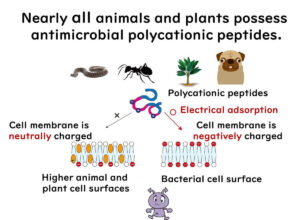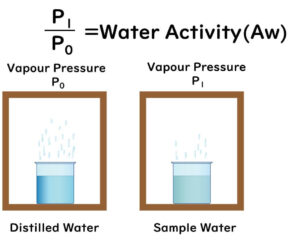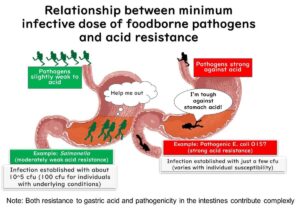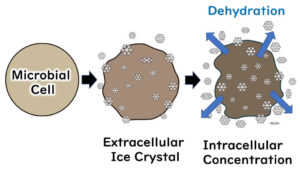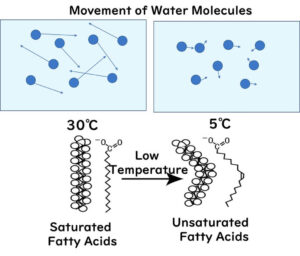Combating Food Pathogens and Spoilage
A Natural Antimicrobial Agent Transforming Food Preservation and Medicine
In our ongoing exploration of food preservatives, we delve into the fascinating world of nisin, a natural antimicrobial agent that has carved a niche for itself in the global food industry. Originally discovered in fermented milk in 1928, nisin has been celebrated for its effectiveness and safety, receiving approval from various health authorities worldwide, including the FAO/WHO and the U.S. FDA. This article examines nisin’s journey from a humble natural discovery to a cornerstone in food preservation, highlighting its unique properties, mechanisms of action, and its emerging significance in the medical field against antibiotic-resistant bacteria. Join us as we uncover how nisin, a polycationic peptide and a member of the bacteriocins family, continues to make significant contributions to both food safety and human health, proving itself as a vital tool in our antimicrobial arsenal.
How Glycine Extends the Microbiological Shelf Life of Japanese Convenience Foods
In Japanese convenience stores and supermarkets, the simple amino acid glycine plays a pivotal role in extending the shelf life of popular foods like bento boxes, side dishes, and bakery sweets. This blog post will explore the antibacterial properties of glycine, its unique function in preventing microbial growth, particularly against bacteria forming heat-resistant spores, and its contribution to the flavor profiles of various foods. Dive into the science behind glycine, understanding why this ingredient is so crucial in keeping your favourite convenience foods both safe and delicious.
From Food Preservation to Antibiotic Alternatives: The Antimicrobial Power of Polylysine and Protamine
Polylysine and protamine, polypeptides comprising 25 to 30 L-lysine and arginine amino acids respectively, are transforming the landscape of microbial inhibition. Initially researched in Japan during the late 1970s for their food preservation properties, these polycations have been pivotal in combating both Gram-negative and Gram-positive bacteria. Their profound impact extends beyond the culinary world into the medical field, where they are now being explored as promising alternatives to conventional antibiotics amidst rising antibiotic resistance.
Water Activity Explained: What is It and How Does it Differ from Water Content?
In this article, we'll dive into the intriguing world of water activity, cleverly deciphering its principles and how it differs from mere water content. We'll explore the nuances of bound and free water, the principles behind measuring water activity in food, and how reducing water activity can enhance the shelf life of preserved foods like those cured with salt. Additionally, we'll discuss the relationship between water activity and the growth of microbes such as bacteria and mold. Plus, I'll toss in some handy values of water activity to remember that could be a lifesaver—or at least a food saver! So, buckle up, and let's get our science on!
Comparative Analysis of Minimum Infectious Dose and Gastric Acid Resistance Between Salmonella and Enterohemorrhagic Escherichia coli
In this article, we'll explore the differing amounts of bacteria needed to cause food poisoning by two culprits: Salmonella and enterohemorrhagic Escherichia coli. Additionally, we'll discuss a major factor contributing to these differences: the varying resistance to stomach acid between the two.
The Impact of pH on Microbial Growth and Decay, and the Antimicrobial Action of Organic Acids
In this riveting exploration, we dive into how pH affects the growth and demise of microbes, using sodium acetate, propionic acid, and sorbic acid as our guides to elucidate the mechanisms of antimicrobial action of organic acids. Additionally, we discuss the crucial role of stomach acid in annihilating infectious food poisoning bacteria, highlighting its germicidal functions. Furthermore, we'll explore how variations in acid resistance among food poisoning bacteria relate to the minimum number of bacteria required to cause disease. Lastly, it's fascinating to note that food poisoning bacteria are generally vulnerable to acids, a characteristic intrinsic to their very nature as pathogens.
What Happens When Bacteria Are Frozen? Do They Die or Survive?
Explore the surprising effects of freezing on bacteria in this scientific inquiry. We examine how microorganisms from different environments respond to extreme cold, focusing on their survival, dormancy, and death mechanisms. This article highlights crucial findings relevant to food safety, revealing how common pathogens like Escherichia coli O157 react under freezing conditions. Dive into the fascinating interplay between microbiology and freezing temperatures, and discover what this means for food hygiene practices.
Understanding the Basics of Microbial Growth and Temperature
Dive into the world of microbes and temperatures with us! Understanding how bacteria grow is crucial, especially since many foodborne pathogens are mesophiles that thrive at moderate temperatures. There's a myth, however, that psychrophiles, those that love the cold, only grow in fridge-like conditions. We'll clarify this by exploring the growth characteristics of these temperature-sensitive microbes, including the versatile Listeria, and the adaptations that allow some to prosper in the cold. Get ready to deepen your knowledge on microbiological principles vital for food safety.
High-Pressure Processing (HPP) of Food: A Non-thermal Preservation Technique
High-Pressure Processing, also known as High Hydrostatic Pressure (HHP) or Ultra High Pressure (UHP), is a non-thermal technology for food preservation that inactivates foodborne pathogens and spoilage bacteria. Compared to thermal processing, high-pressure processed foods have less negative impact on taste, texture, appearance, and nutritional value. Therefore, HPP is gaining attention as an alternative to thermal sterilization techniques. This article organizes the basics of high-pressure processing from the perspective of microbial sterilization.
The Power of Ozone Sterilization
This article summarizes the basics of ozone gas and ozone water. Ozone, a potent oxidizing agent, boasts remarkable sterilizing power. Additionally, it naturally decomposes into non-toxic oxygen, leaving no residues when used as a food sterilizer. Ozone can be utilized in two forms: as ozone gas or ozone water. Using ozone gas requires high concentrations, but it comes with several challenges, such as toxicity due to gas diffusion and the corrosive effect it has on a wide range of equipment, limiting its current applications in industry. On the other hand, ozone water, even in minimal concentrations (1-5 ppm), exhibits antimicrobial activity. The use of ozone water is not only promising for the food industry but also has broad potential applications in domestic and medical sectors.

